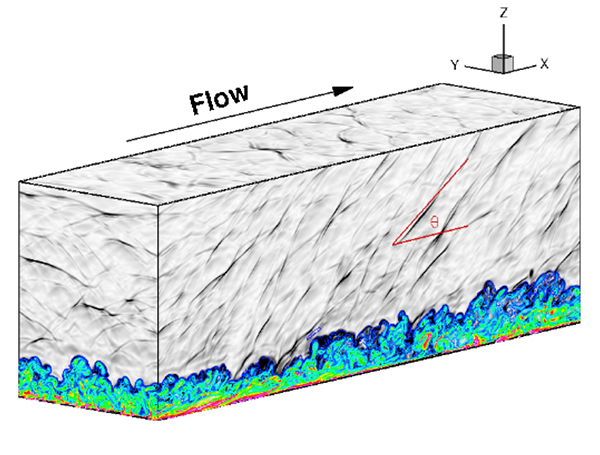Lian Duan

Lian Duan
Assistant Professor, Department of Mechanical and Aerospace Engineering
Research Interests : Direct numerical simulation (DNS) and large eddy simulation (LES), high-speed transitional and turbulent flows, chemically reacting flows, laminar flow control and turbulent drag reduction, and large-scale, high performance computing.
Computational Fluid Dynamics Lab
Our group is interested in compressible turbulence occurring in many engineering (commercial and supersonic flight and propulsion, reacting flows) and natural systems (supernovae explosions, volcanic eruptions, solar wind). We are developing advanced direct numerical simulation (DNS) tools for simulating compressible turbulence at high Reynolds numbers and generating benchmark data for fundamental understanding of turbulence physics. In particular, we are advancing prediction and control capability for high-speed transitional and turbulent flows supporting the nation’s next generation high-speed cruise vehicles, such as those used for space exploration or military strikes.

Relevance of Compressible Turbulence
Compressible turbulent flows are characterized by a wide range of spatial and temporal scales. Our fundamental understanding of compressible turbulence remains very limited due to their complexity, especially at high Reynolds numbers. The lack of understanding restricts our ability to predict natural phenomena and design better engineering devices.
Direct numerical simulations (DNS) is a valuable tool for generating benchmark data for developing more accurate turbulence models and for providing access to quantities that cannot be measured easily. The simulations, unprecedented in size and detail, will unveil tremendous details to provide a unique opportunity for investigators to understand long-standing issues such as small-scale universality, inertial-range scaling, intermittency and largely unexplored areas such as mixing and dispersion of contaminants as well as to help develop advanced turbulence models.
